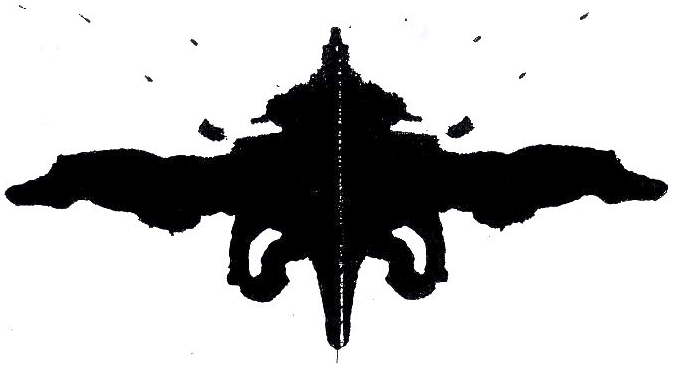
FORMAL TRANSFORMATIONS
The exposition continues with the
investigation of another type of pattern emerging upon completion of the process which the
Surrealists referred to as "décalcomanie".
'The operation known to the Surrealists as "décalcomanie" is repeated. Here a
form or splash of ink is deposited in the middle of a sheet which is then folded once or
twice, pressed and then opened out to reveal the practically symmetrical form which has
been produced by a hazard beyond control. As with all of the latter operations the
interest of these results is not guaranteed. The general purpose of the exercise is to
expose the participants to a very wide range of possibilities one or more of which may
excite their curiosity and lead to a concrete result. In all cases however it has been
found to exhibit a far wider field of operations than that already known.'
This has certain affinities with the Rorschach test which uses the same method - an
inkspot flattened between two boards or simply folded creating an irregular symmetrical
shape and asking the person (the patient) to invent stories about its meaning - as many as
possible . In the case of an artist this would consist in eliciting further actions either
representative or abstract: leading to further work which can be developed.

Fig.181. Ink form placed in the middle of a sheet of paper,
folded, pressed and opened, untransformed by further operations of the artist.
Fig.182. Ink form placed in the middle of a sheet of paper, folded, pressed and opened, transformed by the artist in a figurative direction, arises as a moth.
Fig.183. Ink form placed in the middle of a
sheet of paper, folded, pressed and opened, transformed by the artist, emerges as an
abstract pattern having many suggestive significances.
So the ink spot has again both figurative and abstract possibilities through the artist's
transformations - becoming a centre of fascination.
back |